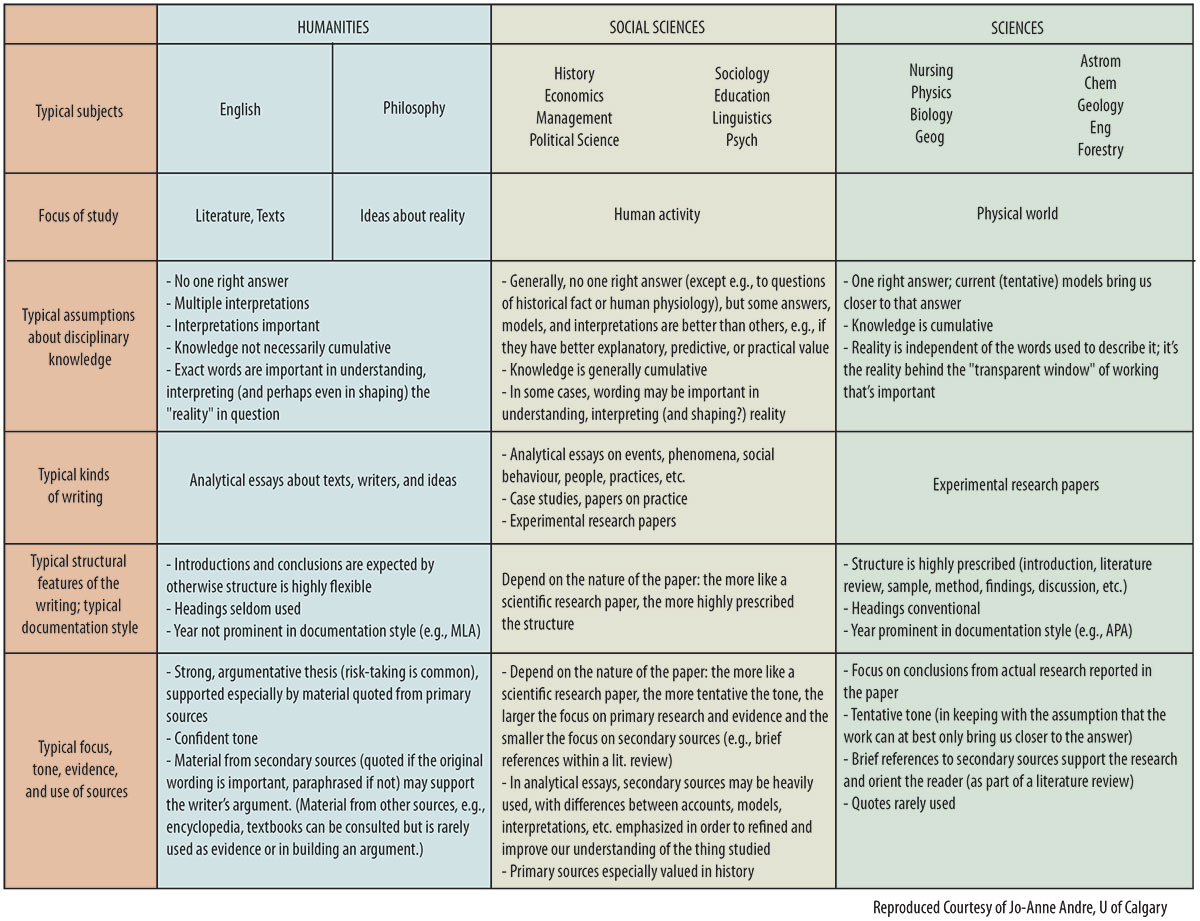If you have already tried out the quizzes and read through the interviews, create a graphic representation of the disciplines, comparing the language used, the attitudes, the use of evidence, etc., we’d find in the humanities, the social sciences and the sciences. Your graphic representation or chart might look something like this:
| Humanities | Social Sciences | Sciences |
|---|---|---|
| Subject Areas | Subject Areas | Subject Areas |
| Focus of Study | Focus of Study | Focus of Study |
| Genres | Genres | Genres |
| Writing Style | Writing Style | Writing Style |
| Documentation | Documentation | Documentation |
| Evidence | Evidence | Evidence |
| Typical Focus | Typical Focus | Typical Focus |
In the spirit of interdisciplinary, you need not represent your findings in a traditional grid chart. Any form of graphic representation is welcome: a drawing or sketch map, a flow chart, a diagram, a visual narrative, an infographic, an animation, or a more impressionistic or artistic work.
Differences between the disciplines, even small differences, are important. Knowing not only what documentation style the humanities uses, but why an area like English cites the author and page rather than the author and date can tell us a lot about the way the discipline work. For example, in the social sciences, emphasis is placed on recent relevant research–and thus the date of the research is especially important. In the humanities, especially in English Studies, the date of publication is not that important: English scholars are just as likely to use an ancient authority as they are a contemporary one. English is a text-based discipline, and thus more interested in the author and the place where the text is found; the social sciences is tied to observation and experimentation–and is thus more interested in building upon the latest findings.
Once you’ve tried to chart your own sense of how we write in the disciplines, compare your results with this chart provided by the University of Calgary:
Click to view larger image | Download PDF

Source: (University of Calgary, Effective Writing Programme, 1998). Reproduced courtesy of Professor Jo-Anne Andre
